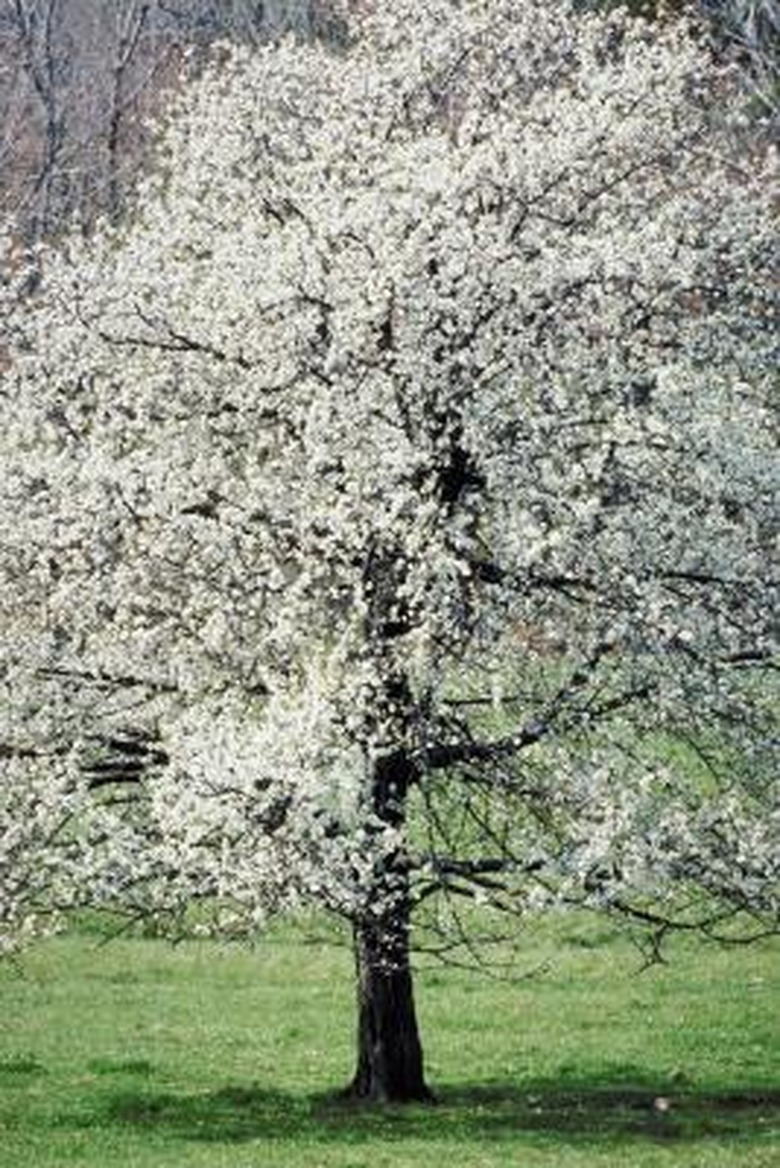Is The Dogwood Tree A Softwood Or Hardwood?
Flowering dogwood (Cornus florida) also is called boxwood and bunchberry. This North American species of hardwood tree produces distinctive fragrant white flowers in the spring, followed by clusters of bright red fruit. Its wood once widely was used for tool handles, mallet heads, wedges, engraver's blocks and golf clubs. This tree more commonly is planted now as an ornamental on shady sites.
Density
Dogwood is an extremely dense hardwood. When properly seasoned, this wood rates a 2150 on the Janka hardness scale, which measures units of force. By comparison, white oak is rated 1360 and eastern white pine is 380. Unseasoned dogwood is considerably less hard and dense, rating around 1410 on the Janka scale. This wood shrinks considerably while drying. Despite its density and hardness, dogwood has little decay or insect resistance.
- Flowering dogwood (Cornus florida) also is called boxwood and bunchberry.
- Unseasoned dogwood is considerably less hard and dense, rating around 1410 on the Janka scale.
Appearance
This tree is relatively small, with a short trunk that makes it unable to produce large pieces of lumber. The sapwood, which composes most commercial dogwood lumber, is white to light pink-brown. The heartwood is very narrow and yellow-brown to dark brown. It often has a variegated appearance. Dogwood produces a fine, closed, interlocking grain and a very even texture.
Working Properties
This hardwood saws relatively easily. Its closed grain provides little resistance to planing or turning. Dogwood glues and polishes effectively. However, it is a poor choice for use outdoors or where wood movement is a problem, since this lumber can move significantly over the course of its life. Dogwood has a very high bending strength, and is considerably stronger than teak or hard maple, woods often used for their durability.
- This tree is relatively small, with a short trunk that makes it unable to produce large pieces of lumber.
Uses
Up to 90 percent of all dogwood lumber in current commercial use is carved into weaving shuttles for the textile market, according to the Woodworkers Source website. It also is used to make spools, bobbin heads, small pulleys, durable skewers and golf club heads. It may be converted into charcoal for gunpowder making. This hardwood is sometimes used to make window sills, jewelry boxes, propellers and wooden bushings and bearings.
